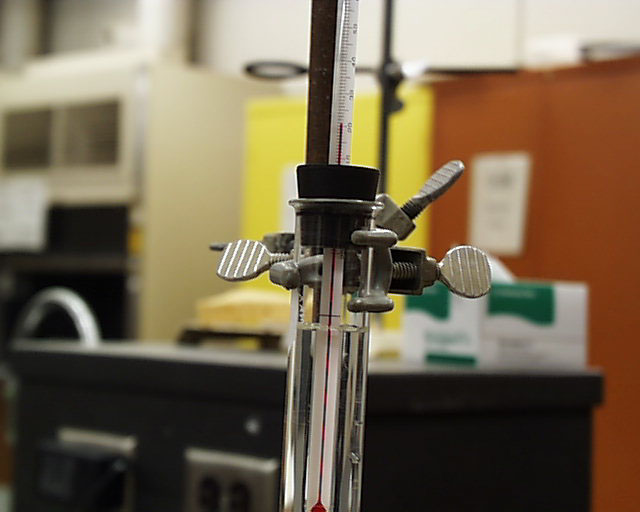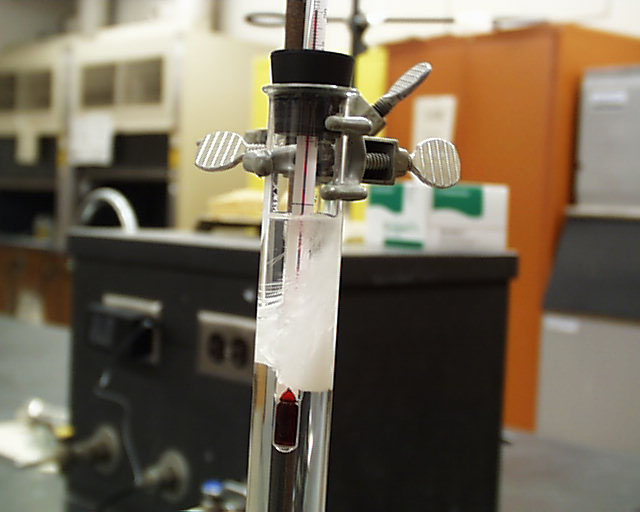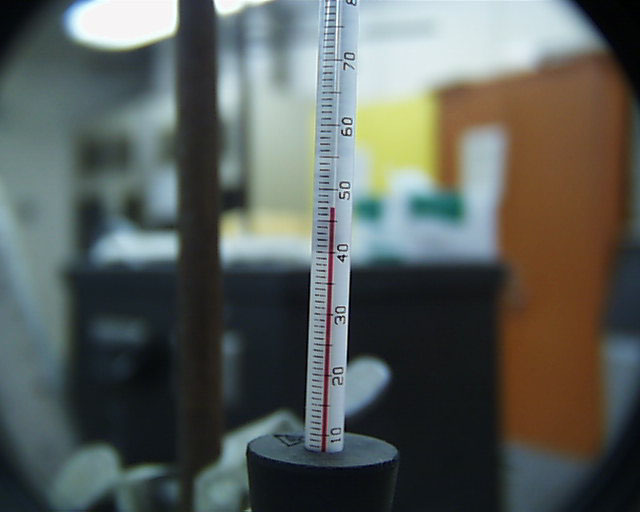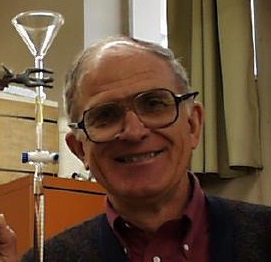Crystallization of Sodium Acetate from a Supersaturated Solution (Demo)
- Page ID
- 77699
An aqueous solution can be rendered supersaturated by first dissolving the solute in water at an elevated temperature using enough to give a concentration just under its solubility at that temperature. After the last of the solute crystals have dissolved the solution is cooled. The cooled solution has a concentration above the saturation point and is said to be supersaturated. Crystals do not form unless the cooled solution is disturbed in some way, most often by allowing it to come into contact with a small crystalline fragment of the substance. The model used to describe this phenomenon is that once a template of the crystalline form of the substance is made available to the supersaturated solution, spontaneous crystallization begins immediately.
Here is a supersaturated solution of sodium acetate in water..

The stopper is removed and replaced with a stopper holding a thermometer.

Often, that change in environment is enough to start crystallization, though in this case it did not. The stopper is loosened and a few seed crystals are introduced on a spatula to the top of the supersaturated solution. In this solution there is a top layer which is not supersaturated owing to some distilled water which was introduced to wash down the inner wall just prior to heating. Note that the crystals begin to grow immediately from the spot where the seed crystals fell to the point of supersaturation.

Within a few seconds, the crystals have grown almost to the bulb of the theromometer.

The crystals grow past the bulb.

Finally, the crystallization process is complete and has changed the appearance of the contents from a transparent solution to an inhomogeneous and opaque mixture.

The final temperature is more than 25 °C, above the starting point; the room temperature was close to 20 °C and the final temperature is close to 47 °C

- Click here to see the demonstration showing the process and its exothermic nature.
- Click here to see the demonstration in MPEG format and compatible with Windows Media Player and Real Player Plus G2. (File size =16.7 MByte)
Contributor
- Oliver Seely (California State University, Dominguez Hills).


